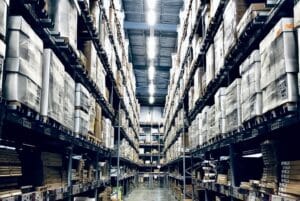WMS and TMS Synchronization: The Key to a 100% Efficient Supply Chain
WMS software
Logistics
Supply Chain
August 8, 2025

What if the efficiency of your logistics no longer depended solely on the performance of your tools, but on their ability to communicate?
Today, speed and precision are no longer options but expectations. Therefore, the slightest disruption in your supply chain comes at a high price. Immobilized inventory, late deliveries, dissatisfied customers... are these scenarios familiar to you?
The problem often lies not with your teams or warehouses, but in the silence that reigns between your internal operations and your transport activities.
Now imagine for a moment that your warehouse and your carriers speak a single language. That every package prepared is instantly matched to the best transport plan. That every piece of information flows seamlessly, from the receipt of raw materials to the delivery driver's handshake with your end customer.
This isn't science fiction. It's the promise of successful integration between your Warehouse Management System (WMS) and your Transport Management System (TMS).
Forget siloed systems. It's time for symbiosis. This article is a strategic roadmap for transforming your logistics into a decisive competitive advantage by unifying these two pillars of your supply chain.
So, ready to unlock unsuspected levels of performance and profitability?
WMS and TMS: Defining the pillars to better unite them
Before building the bridge, it's essential to understand the two sides it will connect. Too often, the terms WMS and TMS are used interchangeably, creating confusion that hinders optimization projects. Let's clarify their respective roles. They are two separate brains , but their true genius is revealed when they work together.
The Warehouse Management System (WMS): The conductor of your warehouse
WMS software , or Warehouse Management System, is the central nervous system of your internal operations. Its mission? To manage and optimize all physical flows within the warehouse walls.
Think of it as the mastermind of your warehouse management . It doesn't just know where every item is. It orchestrates every movement, every task, every resource to ensure maximum efficiency.
WMS functionalities have the particularity of covering a very broad spectrum and among others:
- Receiving goods: Quality control, recording and intelligent addressing of products.
- Inventory Management: Real-time tracking of stock levels, rotating inventories, and location optimization to reduce travel times.
- Order preparation: Optimization of picking paths, management of preparation methods (voice, scan, etc.) to speed up the process and reduce errors.
- Shipping: Organization of docks, consolidation of packages and preparation of shipping documents.
In short, warehouse management software guarantees the promise of on-time, error-free order picking. However, it stops at the warehouse threshold, at the shipping dock . This is precisely where TMS comes into play.
The Transport Management System (TMS): The pilot of your transport flows
If the WMS is the master of the internal, the TMS software, or Transport Management System, is the master of the external. This transportation management software takes over once the packages are ready to leave the warehouse . Its universe is not made of racks and aisles, but of routes, carriers, and delivery plans.
Its main objective is to plan, execute and optimize the physical movement of goods, whether upstream (supplies) or downstream (deliveries).
Key functions of a TMS include:
- Carrier selection: Choosing the best service provider based on cost, timeframes, type of goods and delivery constraints.
- Route and Load Optimization: Calculate the most efficient routes and plan truck loading to maximize capacity and reduce empty miles.
- Execution and monitoring: Transmission of orders to carriers, real-time monitoring of shipments and management of contingencies.
- Billing and analysis: Control of carrier invoices, pre-billing and performance analysis via key indicators (KPIs).
The TMS is your control tower for everything that happens on the road . It is essential for controlling your transport costs and ensuring the reliability of your deliveries.
The Critical Frontier: Where Visibility Stops Dead
Traditionally, WMS and TMS operate in parallel worlds . The WMS prepares an order and generates a label. The information is then, very often, manually re-entered into the carrier's system or the TMS.
This break in the information chain is ultimately a source of inefficiency, errors and hidden costs.
Without seamless communication, how can the WMS anticipate carrier availability to plan its preparation waves? How can the TMS optimize a load if it doesn't receive real-time information on the weight and volume of the packages prepared by the WMS? How can you offer your customer complete traceability if you have to consult two separate systems that don't communicate with each other?
It is this informational “black hole” that TMS and WMS integration fills..
Beyond Silos: The Concrete Benefits of WMS/TMS Integration for Your Profitability
Linking your WMS and TMS isn't just an IT project. It's a strategic decision that redefines your operational potential . By bringing your warehouse and transportation systems into dialogue, you create a smart logistics ecosystem. The benefits are felt at all levels, especially on your bottom line.
End-to-end visibility: From order to final delivery
This is the most cited benefit, and for good reason. Integration transforms your previously opaque supply chain into an open book.
When systems are synchronized, data flows seamlessly . The preparation order validated in the WMS automatically triggers a shipment request in the TMS. The carrier's pick-up status in the TMS is instantly transferred to the WMS.
The result? You have a truly unified logistics tracking software. No more wasted time calling carriers to find out the status of a delivery. Your customer service team can respond accurately and proactively to customer requests.
This increased visibility makes it possible to anticipate delays, proactively manage exceptions and, ultimately, transform a potential source of dissatisfaction into a controlled customer experience.
Increased operational efficiency: Save time and reduce errors
Automating the exchange of information between the two systems eliminates a large amount of low value-added manual tasks .
- No more double entry: Order information, addresses, weight, volume, and special instructions are entered only once. This reduces the risk of human error, which can lead to costly returns and disputes.
- Optimized planning: The WMS can adapt its preparation waves based on the expected truck departure times communicated by the TMS. This avoids clogging shipping docks with orders that will not leave for several hours later.
- Streamlined shipping process: At the end of preparation, the WMS automatically transmits all necessary data (number of packages, dimensions, weight) to the TMS. The TMS can then confirm the transport plan, assign the correct carrier, and issue compliant labels and transport documents, without any manual intervention. Warehouse automation thus extends to the truck doors.
Cost Optimization: The Direct Impact on Your Margin
- Better transport choices: By having accurate and reliable information from the WMS, the TMS can perform more accurate simulations and systematically choose the most economical transport option based on real constraints.
- Filling optimization: Real-time communication of weight and volume data allows the TMS to better plan truck loading, improve the filling rate and therefore reduce the cost per package shipped.
- Reduced safety stocks: Better visibility and greater reliability of transport flows (upstream and downstream) allow you to reduce the safety stocks you maintain to compensate for uncertainties. Less stock means less tied up capital.
- Reduced penalties and disputes: By ensuring on-time shipments (through better WMS planning) and providing accurate information, you reduce the risk of late penalties or disputes with carriers and customers.
Quality of service and customer satisfaction: The nerve of war
Ultimately, all these operational gains converge towards one ultimate goal: a satisfied and loyal customer.
- Delay reliability: Synchronization ensures that the promised delivery date (ETA – Estimated Time of Arrival) is much more reliable, as it is based on real constraints shared between the warehouse and the road.
- Proactive Communication: In the event of an incident (road, warehouse), information is shared immediately. You can inform your customer before they even notice the problem, transforming potential frustration into a demonstration of professionalism.
- Fewer errors, fewer returns: The accuracy provided by eliminating manual entries reduces delivery errors and, therefore, the costs and complexity of returns management .
In any case, WMS/TMS integration should be seen as an investment in the robustness and intelligence of your supply chain, with a tangible and rapid return on investment.
Successful WMS/TMS Integration: Your Technical and Organizational Roadmap
Launching an integration project between your WMS solution and your TMS software can seem daunting, and that's understandable. However, a structured approach, broken down into clear phases , is the best guarantee of success. After all, it's as much a technology project as it is a change management project.
Phase 1: Audit and definition of objectives (The “Why”)
Before talking technology, talk strategy.
Ask yourself the right questions: What is our main source of pain today? Delivery delays? Excessive shipping costs? The time spent by customer service tracking down packages?
Take the time to ask yourself about your value proposition and the type of visibility you really want to achieve.
The goal is to set clear, measurable, and achievable (SMART) goals . For example: “Reduce shipping costs per order by 15% in 12 months” or “Improve on-time delivery (OTD) rates from 95% to 98%.”
Actionable Checklist – Phase 1: Audit & Objectives
- Map existing processes: Document in detail how information currently flows between the warehouse and transportation. Identify gaps, manual entries, and bottlenecks.
- Involve stakeholders: Coordinate your IT, transportation, customer service, and warehouse teams. Their field feedback is invaluable.
- Define critical data flows: List the information that must be exchanged. At a minimum: preparation orders, shipping confirmations (with weight/volume), tracking statuses, and proof of delivery.
- Set project KPIs: Select 3 to 5 performance indicators (see next section) that will allow you to measure the success of the integration.
- Establish a budget and forecast schedule: Evaluate the resources needed (human, financial) and set a realistic macro-plan.
Phase 2: Choosing the solution and the integration partner (The “How”)
Once your goals are clear and set, you must choose how to achieve them. Several technical scenarios are possible:
- Unified software suite: Some vendors offer an integrated offering that includes both a WMS and a TMS. This is often the simplest solution in terms of “native” integration, as the systems are designed to work together.
- Integration via API or EDI: If you already have a WMS and a TMS from different vendors (the most common case), integration will be done via specific connectors. APIs (Application Programming Interface) are increasingly favored for their flexibility and ability to exchange data in real time, while EDI (Electronic Data Interchange) remains a robust standard for structured transactions.
- Middleware or integration platform (iPaaS): These solutions act as a universal “translator” between your different software, facilitating connection without requiring complex developments on either side.
Choosing the right partner is as important as choosing the right technology . First and foremost, make sure your vendor(s) have expertise in both warehouse processes and transportation.
Phase 3: Technical deployment (the “Construction”)
This is THE long-awaited phase. The realization. The technical teams come into play to build the bridges between the two systems.
Data mapping is the most complex step here. This involves defining precisely which information in the WMS corresponds to which information in the TMS . For example, the "Order Number" in the WMS becomes the "Shipping Reference" in the TMS. This translation must be perfect to avoid any misinterpretation.
Testing is the second step. It's not enough to just test the "perfect case." Above all, it's important to test the system's robustness by simulating exceptions: an order canceled after being sent to the TMS, an actual weight that differs from the theoretical weight, a delivery address changed at the last minute.
Actionable Checklist – Phase 3: Deployment
- Write detailed functional and technical specifications: This document is the contract that precisely describes the expected operation of the interface.
- Develop or configure connectors (API/EDI): The technical team sets up the IT “pipes”.
- Plan the test phases:
- Unit testing: Each data flow is tested in isolation.
- Integration tests: We check that the entire chain works.
- Performance testing: We ensure that the interface can handle the volume of orders on a peak day.
- User testing (UAT): Future users validate that the solution meets their needs in a pre-production environment.
- Prepare the cutover plan: Decide on the production launch strategy (Big Bang, in waves, pilot site, etc.).
Phase 4: Change management and training (“Adoption”)
A successful integration project is not just one that works technically, but one that is fully adopted by users.
New procedures must be communicated clearly and well in advance. Teams must understand the personal benefits they will gain from this change: less manual entry, fewer conflicting calls, more reliable information.
Training should not be a simple "click-a-button" approach. It should be "business process" oriented. Explain the new workflow from A to Z , showing how a preparer's action in the WMS has a direct impact on planning in the TMS.
This roadmap, followed rigorously, maximizes your chances of transforming your integration project into a lasting success.

Essential KPIs for measuring the ROI of your unified logistics ecosystem
"What you don't measure, you don't improve." This well-known quote from William Edwards Deming is the cornerstone of any logistics optimization approach. Once your WMS and TMS are synchronized, you have a treasure trove of data at your disposal. You then need to transform this treasure trove into actionable information using relevant Key Performance Indicators (KPIs). These KPIs will not only allow you to manage your day-to-day operations but also, and above all, to prove the return on investment (ROI) of your project.
TMS and WMS integration .
Global supply chain indicators
These KPIs provide an overview of the performance of your unified ecosystem.
Perfect Order Rate: This is the Holy Grail of logistics. An order is "perfect" if it is delivered complete, on time, undamaged, and with the correct documentation. WMS/TMS integration has a direct impact on each component of this indicator, ensuring proper preparation (WMS) and proper transport execution (TMS).
- How to measure it: (Number of perfect orders / Total number of orders) x 100
OTIF (On-Time In-Full): Very close to the perfect order rate, OTIF focuses on two aspects: was the order delivered on time (On-Time) and in its entirety (In-Full)? WMS/TMS synchronization is the sine qua non condition to excel on this KPI, as it aligns the warehouse preparation capabilities with the transport delivery constraints.
- How to measure it: (Number of orders delivered on time and in full / Total number of orders) x 100
Logistics Cost to Revenue: This financial indicator measures the weight of your total logistics costs (warehousing, preparation, transport) in relation to your revenue. The goal is to reduce it. WMS/TMS integration contributes to this by optimizing transport costs, reducing errors (and therefore non-quality costs), and improving overall productivity.
- How to measure it: (Total logistics costs / Revenue) x 100
Transport performance indicators (influenced by WMS)
The quality of data provided by the WMS has a huge impact on transportation efficiency.
Transportation Cost per Shipped Unit (Package, Pallet, Weight, etc.): By providing the TMS with reliable and anticipated weight and volume data, the WMS allows the transportation system to better group shipments, optimize truck filling, and choose the most economical service. You should see this unit cost decrease after integration.
- How to measure it: Total transportation cost / Total number of units shipped
On-Time Pickup Rate: This indicator measures whether carriers were able to load the goods at the agreed time. Proper synchronization allows the WMS to schedule preparation so that orders are ready just in time for the truck's arrival, thus avoiding costly waits for the carrier (and penalties for you).
- How to measure it: (Number of loads per hour / Total number of loads) x 100
Warehouse performance indicators (influenced by TMS)
Conversely, information from the TMS can help the warehouse work better.
Order Cycle Time: This is the total time elapsed between receipt of the customer order and final delivery. The visibility provided by the TMS on transport schedules allows the WMS to smooth its workload, avoid last-minute preparation peaks and therefore reduce the overall internal processing time.
- How to measure it: Delivery date and time – Order date and time
Loading Dock Occupancy Rate: A loading dock is a potential bottleneck. By receiving an accurate schedule of truck arrivals from the TMS, the WMS can orchestrate internal movements so that the right pallets arrive at the right dock at the right time, thus maximizing the use of this critical resource and streamlining shipments.
- How to measure it: (Loading Docks Used / Loading Docks Available) x 100
Regularly monitoring these KPIs in a shared dashboard will transform the raw data from your systems into a tool for strategic management and continuous improvement.
Your next competitive advantage is a unified ecosystem
We have traveled the path from two software systems to merging them into a smart logistics ecosystem.
Let's remember the bottom line: operating with siloed WMS and TMS software is like steering a ship with two captains who don't speak to each other. One manages the engine room (the warehouse), the other the helm (transport), but without communication, it's impossible to maintain performance.
TMS and WMS integration is no longer a luxury reserved for logistics giants. It's a strategic necessity for any company looking to transform its supply chain into a growth engine.
In summary, synchronization brings you:
- Complete, real-time visibility that eliminates blind spots in your supply chain.
- Increased operational efficiency by automating processes and drastically reducing manual errors.
- Significant cost reductions, whether in transportation, inventory management or administrative resources.
- Increased customer satisfaction through more reliable, faster deliveries and proactive communication.
The path to this integration requires a methodical approach—a clear audit, a wise technology choice, and strong change management—but the benefits are well worth the investment. By following a structured roadmap and measuring your success with relevant KPIs, you will turn your logistics into a competitive advantage that your rivals will struggle to match.
Contact us for a personalized assessment of your logistics ecosystem. Together, we'll analyze your flows, identify optimization opportunities, and map out your roadmap for success.
FAQ: Everything you need to know about WMS and TMS integration
Can a company have a WMS without a TMS, or vice versa?
Yes, it's entirely possible and even common. Many companies start by implementing WMS software to optimize their storage management and preparation. Others, whose business relies heavily on transportation, may prioritize TMS software. However, to achieve a higher level of performance and end-to-end visibility, synchronizing the two systems becomes essential.
Is WMS/TMS integration reserved for very large companies?
No, that's a misconception. Today, with the rise of SaaS (Software as a Service) solutions and APIs, integration has become much more accessible and affordable for SMEs and mid-sized companies. The benefits in terms of efficiency and cost reduction can be even more impactful for mid-sized organizations.
How long does a WMS/TMS integration project last?
The duration varies considerably depending on the complexity of your processes, the technologies chosen (unified suite vs. heterogeneous systems integration), and the resources allocated. A project can last from a few weeks for a standard integration via existing connectors to several months for a highly complex custom project. The initial audit and scoping phase is key to achieving a realistic schedule.
What are the main data flows exchanged between a WMS and a TMS?
The most critical flows include:
- From WMS to TMS: Shipping orders ready for collection, with precise details (number of packages, weight, volume, destination address, special instructions). This is often referred to as ASN (Advanced Shipping Notice).
- From TMS to WMS: Information on the assigned carrier, the truck's estimated time of arrival (ETA), transport documents (waybill), tracking statuses (picked up, in transit, delivered), and digitized proof of delivery.
How much does such a project cost?
The cost is variable and depends on several factors: the cost of software licenses (WMS/TMS), the cost of the integration service (if you use an external integrator), any specific developments, and internal costs related to project management and training. However, keep in mind that this cost must be considered an investment to be evaluated in relation to the expected ROI (savings on transport, productivity gains, etc.).
Most read articles
Logistics
4.0 solutions
Supply Chain
September 19, 2025
AMR vs. AGV: Which mobile robot will boost your warehouse?
The pressure on warehouses has never been greater. In the race for performance, automation is no longer an option, but a necessity. And at the heart of this revolution are mobile robots. But how do you make the right choice?
WMS software
Logistics
Supply Chain
September 29, 2025
Hazardous Materials Management: How Does a WMS Ensure Compliance and Safety?
Managing flammable, toxic, corrosive, or explosive products isn't just a logistical constraint; it's an immense responsibility, governed by highly complex regulations. Indeed, managing hazardous materials is a daily challenge that leaves no room for improvisation.
WMS software
Logistics
Supply Chain
October 3, 2025
Making your cross-docking project a success: Steps, tools and pitfalls to avoid for a successful transition
Imagine: your goods arrive at the dock, are immediately sorted, and almost immediately depart for their final destination—all in less than 24 hours. No more unnecessary storage costs, no more shortages due to dormant inventory. That's the promise of cross-docking.

















